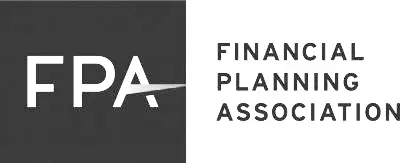Have you checked out the new federal tax forms? Waiting until the last minute to prepare your taxes this year will leave you surprised. With the new tax code, it’s a good idea to give yourself plenty of time to get familiar with the new federal tax forms. But before you get started we wanted to arm you with a few highlights to watch for with the new tax code. That’s why today we brought our very own tax extraordinaire, Grayson Blazek to share his extensive knowledge of the new federal tax forms. Listen to this episode as Grayson helps us understand what the new tax forms look like, what’s changed, how to save and be more efficient on taxes, and what planning opportunities there are to prepare for next year.
What’s different on the new federal tax forms?
Well, that time of year is here again, everyone’s favorite season: tax season! Bringing with it this year, new changes to the standard 1040. The idea behind the new federal tax form is to simplify the tax filing process. The new 1040 is touted as a postcard, while not exactly postcard sized, it is down from 79 lines to 23. Although there are only 23 lines on the new tax form there are several addendums which utilize a building block approach. There might be a touch of confusion for the first few years, but the new tax forms should be pretty easy to get used to. Listen as Grayson explains the new federal tax forms and takes us on a tour of the new 1040.
Here is the lowdown on the new schedules 1-6
- Schedule 1 is similar to lines 10-36 of the old 1040. It is used to report extra income items like rental income and real estate and other above the line deductions.
- Schedule 2 generally covers the old lines 45-47. It is used for the alternative minimum tax. You may not even see this one since most people won’t come across it.
- Schedule 3 replaces lines 48-55 on the previous tax form. Schedule 3 covers child tax credits and dependent care credits.
- Schedule 4 is a replacement for lines 57-63 and covers self-employment.
- Schedule 5 is used for estimated tax payments and amounts paid with extensions
- Schedule 6 is the 3rd party designee.
Besides the new federal tax forms, what else has changed?
Obviously, the changes in the tax code are not only in the format. They eliminated personal exemptions which were $4500 per taxpayer on the 2017 return as well as dependents. The child tax credit used to be $1000 per child but has been increased to $2000 per child. The income threshold has been increased. There has also been a substantial change to standard and itemized deductions. And it is estimated that the number of people that will itemize their deductions will lower from 20% to 5%. Although there are fewer deductions your overall tax burden may be similar. Listen to this episode to hear what else has changed with the new tax code.
What are the planning opportunities?
When preparing your taxes each year you have the opportunity to reflect on what you could have done to decrease your overall tax burden and what you can do in the future to ease your tax burden. Consider whether you should be taking advantage of your retirement savings accounts or health savings accounts. You can also think about your deductions and how efficiently you can space your charitable deductions. Decide whether you could donate every other year to get past the new threshold for itemized deductions. A donor-advised fund is a great tool to use when planning for your taxes. There are many other planning opportunities to consider so listen in to discover how you can begin planning next year’s taxes.
Outline of This Episode
- [1:47] A tour of the new 1040
- [7:01] Besides the form what else has changed?
- [9:31] Changes to the schedule A were the main overhaul
- [14:26] How has the overall tax rate changed?
- [18:17] What are the planning opportunities?
- [27:20] What has changed with the qualified business income deduction?
Links Mentioned In Episode
- Episode 72 – 7 Tax Reform Opportunities and How to Spot Them
- Episode 55 – Are You Making These Ten Tax Return Mistakes?
- Article – How Does the Small Business 20% Pass Through Deduction Work?
Connect with Grayson Blazek
Connect With Chad and Mike
- https://www.financialsymmetry.com/podcast-archive/
- Connect on Twitter @csmithraleigh@TeamFSINC
- Follow Financial Symmetry on Facebook







